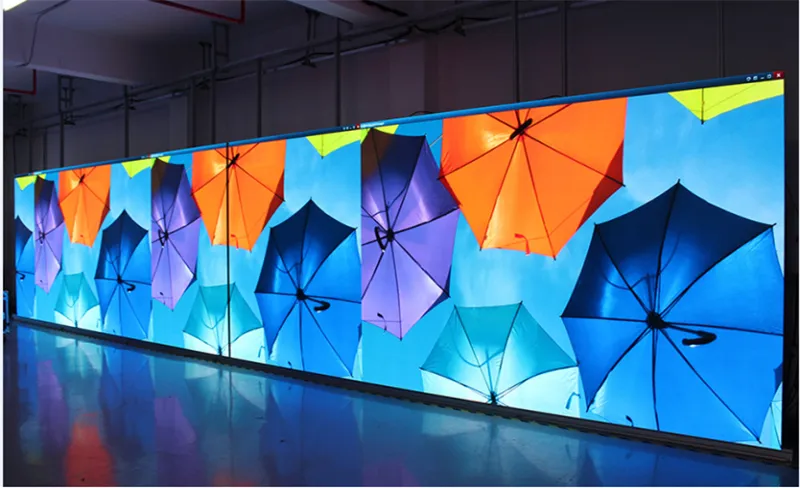How to Choose the Right LED Display Screen: A Comprehensive Guide
In today’s digital age, LED display screens have become an integral part of our daily lives. From advertising billboards to concert stages, and from corporate presentations to home theaters, LED display screens are everywhere. However, with so many options available in the market, choosing the right LED display screen can be a daunting task. This guide will walk you through the key factors to consider when selecting an LED display screen, ensuring you make an informed decision that meets your specific needs.

1. Understand Your Purpose
The first step in choosing the right LED display screen is to clearly define its purpose. Are you using it for indoor or outdoor applications? Is it for advertising, entertainment, or informational purposes? The intended use will significantly influence the type of LED display screen you should purchase.
– Indoor LED Display Screens: These are typically used in environments like conference rooms, retail stores, and theaters. They require high resolution and brightness to ensure clear visibility in well-lit indoor spaces.
– Outdoor LED Display Screens: These are designed to withstand harsh weather conditions and are used for outdoor advertising, sports stadiums, and public information displays. They need to be highly durable, weather-resistant, and have high brightness to be visible in direct sunlight.
2. Display Clarity and Visual Performance Factors
Two key determinants of LED screen performance are resolution and pixel pitch, which together shape image sharpness and detail.
Resolution Dynamics
Display clarity depends on resolution, which represents the total pixel count. A higher pixel density translates to crisper visuals – for example, a 4K panel offers four times the detail of a 1080p screen.
Pixel Pitch Technology
Pixel spacing (measured in millimeters) impacts viewing distance effectiveness. Smaller intervals like 1.5mm enable immersive close-range viewing, while larger 10mm pitches suit distant observation in outdoor installations.
3.Environmental Adaptability
Brightness and contrast ratio ensure visibility across varying lighting conditions.
Luminance Requirements
Screen luminance (measured in nits) counteracts ambient light. Indoor displays typically require 500-1,000 nits, while outdoor models need 5-10 times that intensity to remain legible in direct sunlight.
4. Contrast Optimization
The viewing angle is the maximum angle at which the screen can be viewed without significant loss of image quality. A wider viewing angle ensures that the conThe contrast ratio measures the difference between peak whites and deep blacks. Higher ratios enhance color vibrancy and shadow detail, creating more engaging visual experiences.
5. Refresh Rate
The refresh rate refers to how many times per second the screen updates its image. A higher refresh rate results in smoother motion and reduces flickering, which is crucial for applications like live sports broadcasts or fast-paced video content. A refresh rate of at least 1,920Hz is recommended for most applications.
6. Durability and Maintenance
Durability is a key consideration, especially for outdoor LED display screens that are exposed to the elements. Look for screens with high IP (Ingress Protection) ratings, which indicate their resistance to dust and water. Additionally, consider the ease of maintenance. Modular designs allow for easy replacement of individual panels or components, reducing downtime and maintenance costs.
7. Energy Efficiency
LED display screens can consume a significant amount of power, especially large outdoor displays. Energy-efficient models not only reduce operating costs but also have a lower environmental impact. Look for screens with energy-saving features like automatic brightness adjustment and low-power modes.
8. Content Management System (CMS)
A robust Content Management System (CMS) is essential for managing and updating the content displayed on your LED screen. Ensure that the CMS is user-friendly and supports the formats and features you need, such as scheduling, remote control, and real-time updates.
9. Budget and Total Cost of Ownership (TCO)
While it’s tempting to go for the cheapest option, it’s important to consider the total cost of ownership (TCO), which includes not just the initial purchase price but also installation, maintenance, and operational costs. Investing in a high-quality LED display screen may have a higher upfront cost but can save you money in the long run through lower maintenance and energy costs.
10. Vendor Reputation and Support
Finally, choose a reputable vendor with a proven track record in the industry. A reliable vendor will offer quality products, professional installation services, and excellent after-sales support. Check customer reviews and ask for references to ensure you’re dealing with a trustworthy supplier.
Conclusion
Choosing the right LED display screen requires careful consideration of various factors, including purpose, resolution, brightness, viewing angle, refresh rate, durability, energy efficiency, and budget. By understanding your specific needs and evaluating these key aspects, you can select an LED display screen that delivers optimal performance and value for your investment.
Whether you’re looking to enhance your business’s advertising efforts, create an immersive entertainment experience, or provide critical information to the public, the right LED display screen can make all the difference. Take the time to research and consult with experts to ensure you make the best choice for your unique requirements.
通过遵循本指南,您将能够驾驭复杂的 LED 显示屏世界,并做出满足您需求并超出您期望的决定。祝您购物愉快!

